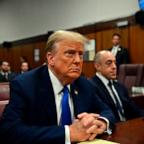How Does Fed Add Cash, and Who Benefits?
How does the Fed add cash to the market and who benefits?
— -- Q: How does the Federal Reserve Bank "add more cash" to the banking system? And who benefits when they do?
A: As the nation's central bank, the Federal Reserve determines how much money is available in the economy.
The dollars available, or liquidity, is critical because it determines how much lending goes on. And lending is a primary factor in determining how quickly, or slowly, the economy expands or contracts.
During the credit crisis precipitated by defaults on subprime mortgage loans, the Federal Reserve has been actively injecting liquidity into the financial system. The Fed has several tools to do that. The two main tools:
•Buying and selling government securities. If business activity is slowing, and the Fed wants to pump cash into economy, it can buy government securities in the open market. When it does that, the financial institutions that sold the securities get cash. When that money starts sloshing around in the banking system, banks are then free to lend it, which juices business activity. This is generally the first thing the Fed does.
•Tweak interest rates. If the Fed is concerned about slowing economic growth, it can cut its target for the federal funds rate. It doesn't directly control the rate because the fed funds rate, now 5.25%, is the interest banks charge each other for overnight loans, which a bank might need to meet its required reserve obligations. But the Fed can push the rate up or down by buying and selling securities (see above), controlling the amount of cash in circulation.
This rate target is not changed lightly, because changes in the fed funds rate almost immediately affect other short-term interest rates, notably banks' prime rate, the base rate for many business and consumer loans. So if the Fed cuts the fed funds rate target, an awful lot of people get a rate cut.
The Fed can also cut its discount rate, which it does directly control. This the rate the Fed charges banks to borrow directly from the 12 regional Federal Reserve banks. The discount rate is what the Fed cut by half a percentage point, to 5.75%, on Aug. 17. A discount rate cut has been considered more of a symbolic move, since the rate is higher than the fed funds rate and banks generally avoid borrowing from the Fed's "discount window" if they can. Still, it signals that the Fed is willing to lend.




